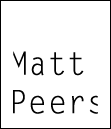The darkroom is full of variables — enlarger height, exposure time, contrast filters, paper types, dodging and burning, developer temp… the list goes on. A workbook helps you track all of it, session by session.
More importantly, it gives you something the darkroom doesn't always offer in the moment, namely perspective.
Repeat your successes – no more guessing games when revisiting a favourite negative.
Learn from mistakes – trace back what didn’t work and why.
Sharpen your eye – over time, your notes reveal patterns and preferences.
What to include
Everyone’s process is different, but here’s a basic structure I use:
For each print:
Image info: film stock, ISO, camera/lens used
Enlarger settings: lens focal length, height, aperture
Contrast filter usedLens: types and settings
Paper: brand, type, grade
Test strip times and observations
Final exposure time of the base Image
Dodging/burning: what, where, how long
A final thought
A good print isn’t just about contrast and tone. It’s also not about relying on your memory. A darkroom workbook helps you preserve more than just the image — it preserves the process of its creation.
Matt
